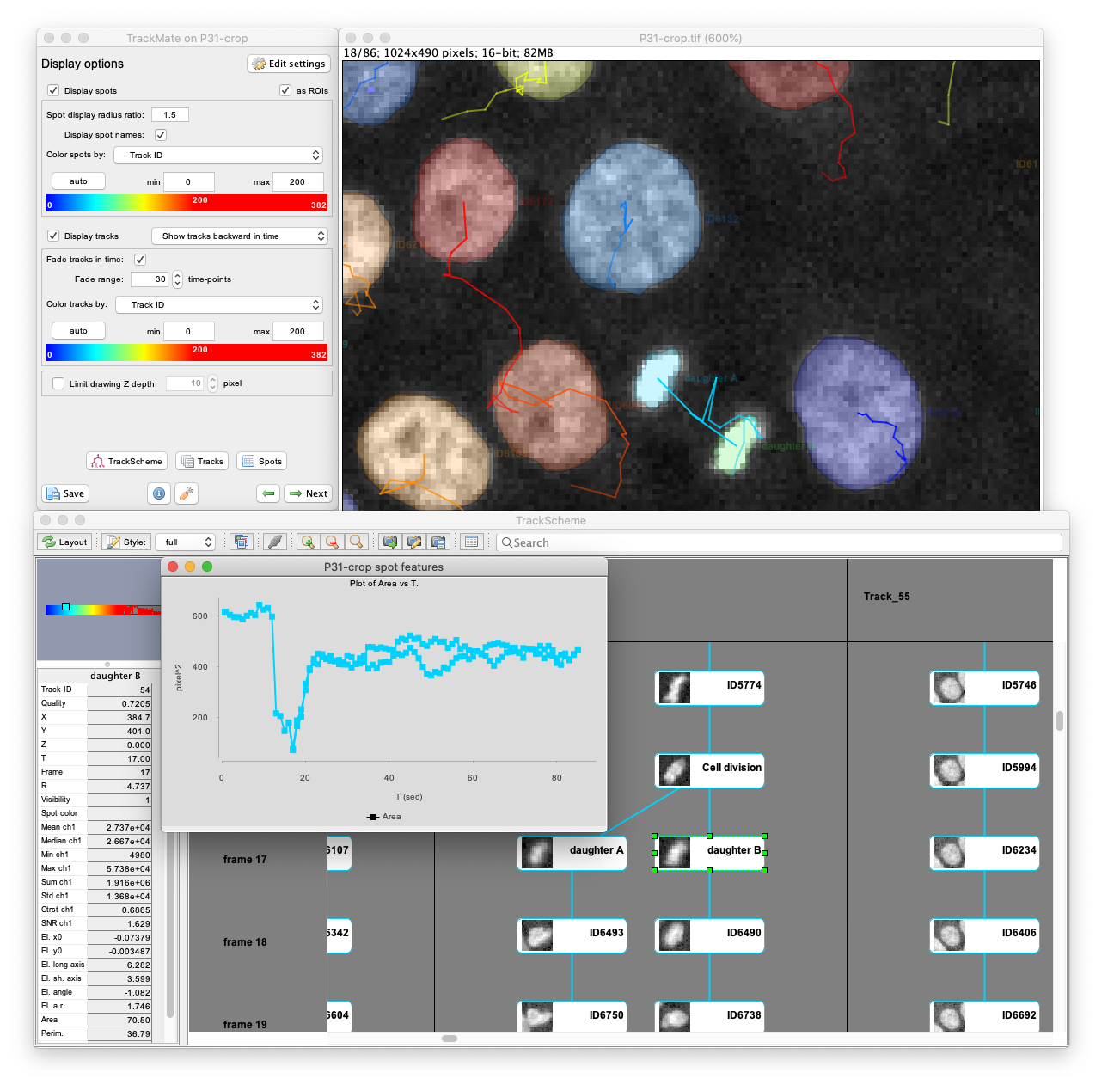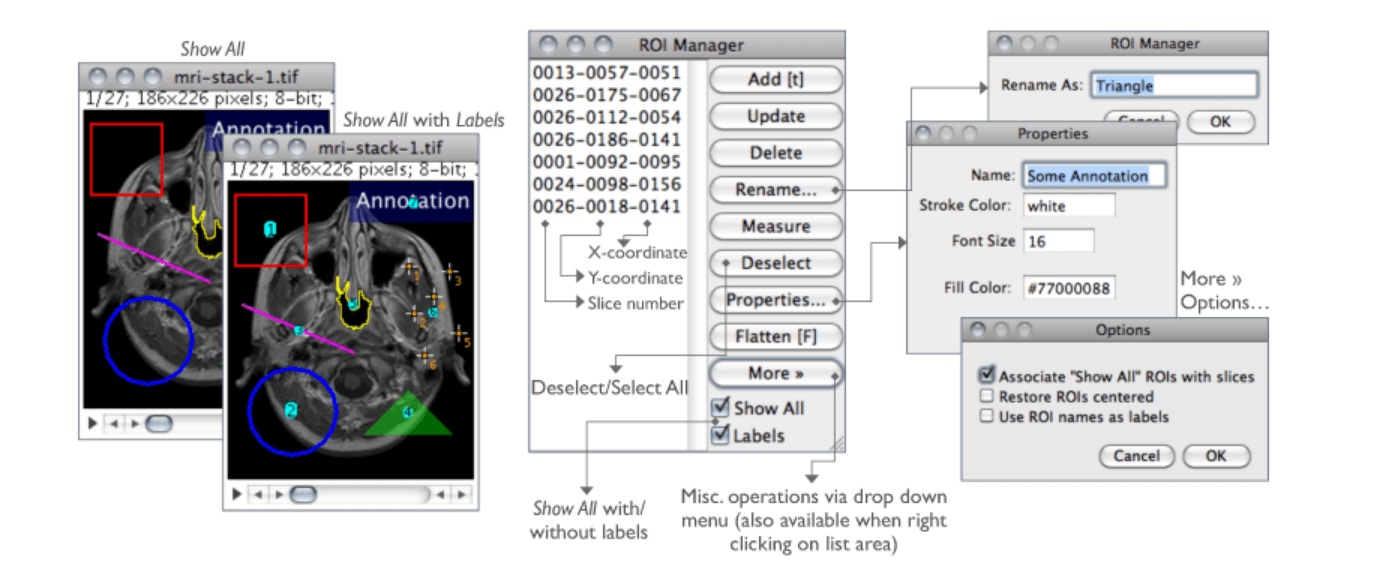
ImageJ offers toolbar, status bar, and progress bar. When speed is not an issue, many other color options are available for creating additional effects. Color: Gray-scale and indexed color are available to help speed up image processing.Applets and Servlets: You can develop your own mini-programs to fit your needs.Macros: You can create and debug macros that will automate the tasks used most often.Plugins: Allows you to write your own plugins to customize the program to fit your needs.

Image sets, called stacks are often used in ImageJ to display multiple spatially or temporally related images in a single window The created shapes can be pasted onto other images as well. You can also create different geometric shapes (polygons, arrows, etc.) within the images. Photo Editing: Allows you to edit images to remove flaws, sharpen or mute the image, and apply filters.Scaling: Allows you to zoom in, zoom out, or reorient images.Output: Creates histograms of population densities and several other types of graphs.Measurements: Based on the image, determines distance, area, and other geometric measurements.Calculations: Creates statistics according to user-defined parameters, such as mean and standard deviation, using standard SI units.Overlays are used to annotate images and mix image ROIs at different opacity levels, allowing to create and work on images non-destructively ROI (Region of Interest) manager helps in working with multiple selections (all types–points, lines, and text) from different stacks, image locations, and images Performs simultaneous functions on these images. Parallel Functions: Supports several images at one time in one display window.Supported Formats: Reads TIFF, GIF, JPEG, BMP, DICOM, FITS, RAW, and several other formats.Interactive: Allows you to easily edit and analyze images for printing.These features are especially important to researchers for analyzing their field photographs and images. Some of the main features of the program are as follows. It is frequently used for analyzing fluorescence microscopy images, dot blot analysis, area measurements, particle counting, segmentation and measurements of spatial or temporal features of biological elements, and more. ImageJ works with several file formats, such as TIFF, JPEG, ASCII, FITS, and more. The software allows you to create graphs from data and display and enhance the images. Users are allowed to run the program, share copies, and make positive changes to the program. ImageJ is a public domain software, which means that it is available without copyright restriction.

It uses Java 1.4 or later versions of Java and can be used either as an online application or downloaded on your computer. The software was developed to allow better image analysis and enhancement.
Imagej software package windows#
However, it is now also available for Windows and Linux.

Formerly known as NIH Image, it was originally developed for the McIntosh computer system. ImageJ is a software package developed by the National Institutes of Health (NIH).


 0 kommentar(er)
0 kommentar(er)
